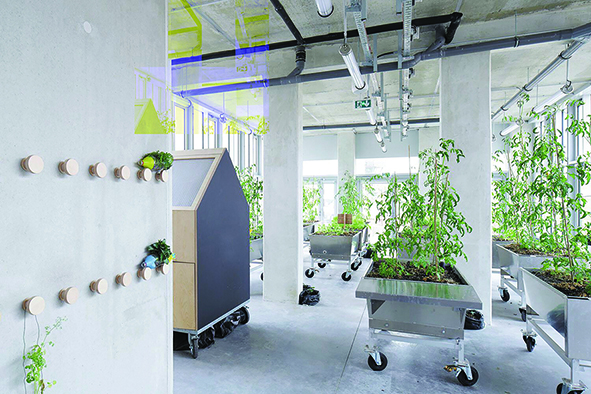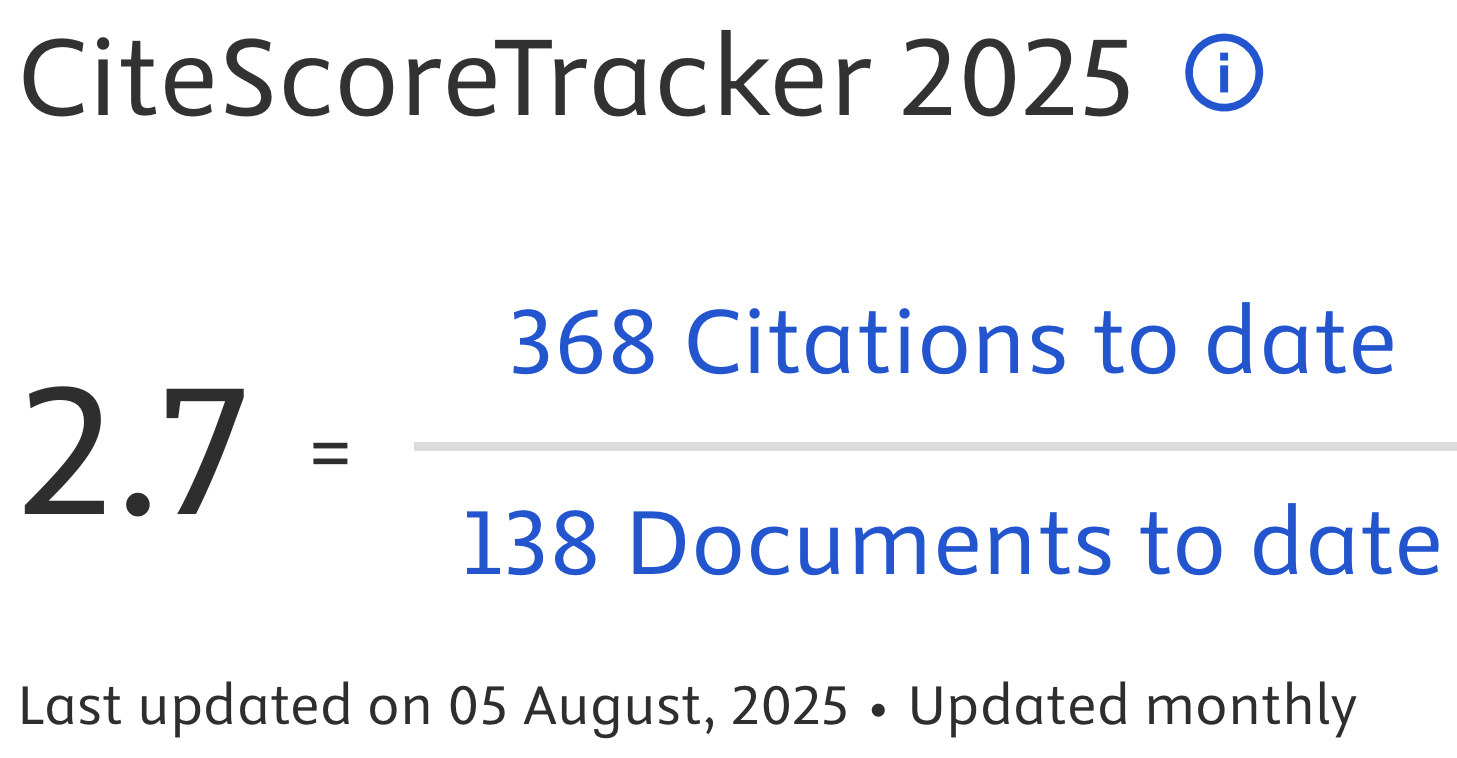Design the adaptation. The Resilience of urban agriculture in the European context
DOI:
https://doi.org/10.19229/2464-9309/1162022Keywords:
urban agriculture, nature-based solutions, climate change, urban regeneration, agriculture in a protected environment, controlled environment agricultureAbstract
The growing phenomena linked to climate change pushes cities to develop resilience plans to respond to environmental, social, and economic sustainability. Nature-based strategies can be a solution; among these, urban agriculture can increase the resilience of European urban fabrics. This activity has been the object of interest several times during crises or as a community activity with social, productive, and educational characteristics. Through a historical excursus and a subsequent analysis of contemporary case studies, the paper provides design tools for intervening in the built environment with strategies ranging from the urban to the architectural scale. The essay presents a replicable morpho-typological approach that can be applied and used by planners and policymakers to increase urban resilience.
Downloads
Article Metrics Graph
References
Adam-Bradford, A., Hoekstra, F. and van Veenhuizen, R. (2009), “Linking relief, rehabilitation and development – A role for urban agriculture”, in Urban Agriculture, n. 21, pp. 3-10. [Online] Available at: urban-agriculture-europe.org/files/adam-bradford_2009_linking_relief__rehabilitation_and_ development._a_role_for_urban_agriculture.pdf [Accessed 25 March 2022].
Armstrong, D. (2000), “A survey of community gardens in upstate New York – Implications for health promotion and community development”, in Health & Place, vol. 6, issue 4, pp. 319-327. [Online] Available at: doi.org/10.1016/S1353-8292(00)00013-7 [Accessed 25 March 2022].
Artmann, M. and Sartison, K. (2018), “The Role of Urban Agriculture as a Nature-Based Solution – A Review for Developing a Systemic Assessment Framework”, in Sustainability, vol. 10, issue 6, 1937, pp. 1-32. [Online] Available at: doi.org/10.3390/su10061937 [Accessed 25 March 2022].
Cabral, I., Costa, S., Weiland, U. and Bonn, A. (2017), “Urban Gardens as Multifunctional Nature-Based Solutions for Societal Goals in a Changing Climate”, in Kabisch, N., Korn, H., Stadler, J. and Bonn, A. (eds), Nature-Based Solutions to Climate Change Adaptation in Urban Areas – Theory and Practice of Urban Sustainability Transitions, Springer, Cham, pp. 237-253. [Online] Available at: doi.org/10.1007/978-3-319-56091-5_14 [Accessed 25 March 2022].
Clément, G. (2012), Breve storia del giardino, Quodlibet, Macerata.
European Commission (2021), New European Bauhaus – Shaping more beautiful, sustainable and inclusive forms of living together. [Online] Available at: europa.eu/new-european-bauhaus/index_en [Accessed 25 March 2022].
European Commission (2019), Communication from the Commission to the European Parliament, the European Council, the Council, the European Economic and Social Committee and the Committee of the Regions – The European Green Deal, document 52019DC0640, 640 final. [Online] Available at: eur-lex.europa.eu/legal-content/EN/TXT/?uri=COM%3A2019%3A640%3AFIN [Accessed 25 March 2022].
European Commission (2018), Communication from the Commission to the European Parliament, the European Council, the Council, the European Economic and Social Committee and the Committee of the Regions and the European Investment Bank – A Clean Planet for all – A European strategic long-term vision for a prosperous, modern, competitive and climate neutral economy, document 52018DC0773, 773 final. [Online] Available at: eur-lex.europa.eu/legal-content/EN/TXT/?uri=CELEX%3A52018DC0773&qid=1649170346917 [Accessed 25 March 2022].
European Parliament and Council (2021), Regulation (EU) 2021/1119 of the European Parliament and of the Council of 30 June 2021 establishing the framework for achieving climate neutrality and amending Regulations (EC) No 401/2009 and (EU) 2018/1999 (‘European Climate Law’), document 32021R1119, L 243/1. [Online] Available at: eur-lex.europa.eu/legal-content/EN/TXT/?uri=CELEX%3A32021R1119&qid=1649169726263 [Accessed 25 March 2022].
Ferreira, A. J. D., Mendes Guilherme, R. I., Santos Ferreira, C. S. and Lorena de Oliveira, M. M. (2018), “Urban agriculture, a tool towards more resilient urban communities?”, in Current Opinion in Environmental Science & Health, vol. 5, pp. 93-97. [Online] Available at: doi.org/10.1016/j.coesh.2018.06.004 [Accessed 24 January 2022].
Gravagnuolo, B. (1991), La progettazione urbana in Europa – 1750-1960 – Storia e teorie, Laterza, Bari.
Haase, A. (2017), “The Contribution of Nature-Based Solutions to Socially Inclusive Urban Development – Some Reflections from a Social-environmental Perspective”, in Kabisch, N., Korn, H., Stadler, J. and Bonn, A. (eds), Nature-Based Solutions to Climate Change Adaptation in Urban Areas – Theory and Practice of Urban Sustainability Transitions, Springer, Cham, pp. 221-236. [Online] Available at: doi.org/10.1007/978-3-319-56091-5_13 [Accessed 25 March 2022].
Haney, D. H. (2010), When Modern Was Green – Life and Work of Landscape Architect Leberecht Migge, Routledge, London.
Holland, L. (2004), “Diversity and connections in community gardens – A contribution to local sustainability”, in Local Environment, vol. 9, issue 3, pp. 285-305. [Online] Available at: doi.org/10.1080/1354983042000219388 [Accessed 25 March 2022].
Howard, E. (1902), Garden Cities of Tomorrow, Swan Sonnenschein, London.
IPCC – Intergovernmental Panel on Climate Change (2021), Climate Change 2021 – The Physical Science Basis – Working Group I Contribution to the Sixth Assessment Report of the Intergovernmental Panel on Climate Change, Cambridge University Press. [Online] Available at: ipcc.ch/report/ ar6/wg1/downloads/report/IPCC_AR6_WGI_Full_Report.pdf [Accessed 25 March 2022].
Kabisch, N., Korn, H., Stadler, J. and Bonn, A. (eds), Nature-Based Solutions to Climate Change Adaptation in Urban Areas – Theory and Practice of Urban Sustainability Transitions, Springer, Cham.
Migge, L. (1999), Der soziale Garten – Das grüne Manifest, Gebr. Mann, Berlin.
Negrello, M. (2019), Architecture for urban agriculture – Spaces and architectures for commercial indoor ‘zero-acreage farms’, Doctoral Dissertation, Doctoral Program in Architecture – History and Project (31st Cycle), DAD – Department of Architecture and Design, Politecnico di Torino.
Negrello, M. and Ingaramo, R. (2021), “Lo spazio del burn-out – Destrutturare per costruire forme alternative per l’abitare | The burn-out space – Destructuring to build alternative living forms”, in Ardeth, vol. 8, pp. 1-18. [Online] Available at: doi.org/10.17454/ARDETH08.11 [Accessed 25 March 2022].
Peleman, D., Ronner, E., Barcelloni, M. and Viganò, P. (2022), “Exploring the Soil – Not a Sentimental Journey”, in OASE | Journal of Architecture – A project of the soil, vol. 110, pp. 4-15.
Pylsy, P., Lylykangas, K. and Kurnitski, J. (2020), “Buildings’ energy efficiency measures effect on CO2 emissions in combined heating, cooling and electricity production”, in Renewable and Sustainable Energy Reviews, vol. 134, 110299, pp. 1-18. [Online] Available at: doi.org/10.1016/j.rser.2020.110299 [Accessed 25 March 2022].
Rubino, A. (2007), “The allotment gardens of the Ile de France – A tool for social development”, in Journal of Mediterranean Ecology, vol. 8, pp. 67-75. [Online] Available at: jmecology.com/wp-content/uploads/2014/03/67-75-Rubino.pdf [Accessed 25 March 2022].
Sanesi, G., Gallis, C. and Kasperidus, H. D. (2011), “Urban Forests and Their Ecosystem Services in Relation to Human Health”, in Nilsson, K., Sangster, M., Gallis, C., Hartig, T., de Vries, S., Seeland, K. and Schipperijn, J. (eds), Forests, Trees and Human Health, pp. 23-40. [Online] Available at: doi.org/10.1007/978-90-481-9806-1_2 [Accessed 25 March 2022].
Santus, K. and Scaioli A. (2021), “Designing the urban commons through gender and nature-based approach – A renewed project for public space in times of crisis”, in Ri-Vista | Research for Landscape Architecture, vol. 19, n. 2, pp. 208-221. [Online] Available at: doi.org/10.36253/rv-11426 [Accessed 25 March 2022].
Spagnolo, I. (2022), “Sharing Landscape – Beyond the urban-rural dialectic – The FARM as a FORM of urban resilience”, in CA2RE+DELFT. [Online] Available at: delft.ca2re.eu/submissions/spagnolo-sharing-landscape-beyond-the-urban-rural-dialectic?s=s [Accessed 25 March 2022].
van Eekelen, E. and Bouw, M. (2020), Building with nature – Creating, implementing and upscaling Nature-based Solutions, NAi010 publishers, Rotterdam.

Downloads
Published
Versions
- 31-01-2024 (2)
- 30-06-2022 (1)
How to Cite
Issue
Section
License
Copyright (c) 2022 Maicol Negrello, Daniele Roccaro, Kevin Santus, Isabella Spagnolo

This work is licensed under a Creative Commons Attribution 4.0 International License.
This Journal is published under Creative Commons Attribution Licence 4.0 (CC-BY).
License scheme | Legal code
This License allows anyone to:
Share: copy and redistribute the material in any medium or format.
Adapt: remix, transform, and build upon the material for any purpose, even commercially.
Under the following terms
Attribution: Users must give appropriate credit, provide a link to the license, and indicate if changes were made; users may do so in any reasonable manner, but not in any way that suggests the licensor endorses them or their use.
No additional restrictions: Users may not apply legal terms or technological measures that legally restrict others from doing anything the license permits.
Notices
Users do not have to comply with the license for elements of the material in the public domain or where your use is permitted by an applicable exception or limitation.
No warranties are given. The license may not give users all of the permissions necessary for their intended use. For example, other rights such as publicity, privacy, or moral rights may limit how you use the material.


















































































